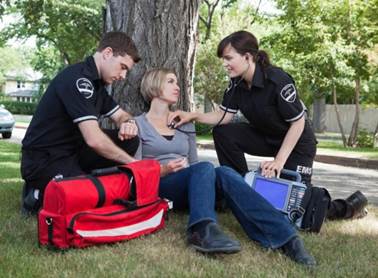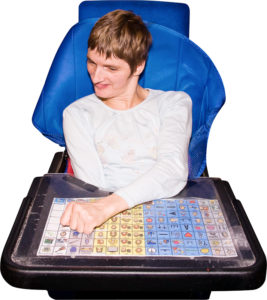Emergencies occur daily around the world both natural such as floods, earthquakes or other natural disasters, or human-caused such as fires, motor vehicle accidents, sports injuries, environmental reactions, health problems, addictions, events like the swine flu pandemic or a terrorist attack.
These emergencies require efficient and effective communication between:
✓ First responder to patient
✓ Patient to the first responder
✓ First responder to EMS
✓ EMS to first receivers in emergency rooms, hospitals, or shelters

Research shows that in an emergency situation communication breakdowns can occur for a number of reasons. A patient may be experiencing:
✓ stress
✓ anxiety
✓ fear
✓ frustration
✓ traumatization by the emergency situation
✓ unrecognized pain
✓ a feeling of overall loss of control
When this occurs effective and efficient communication is key. Some other reasons for communication breakdowns include, but are not limited to:
A pre-existing condition:

A patient is identified with a special need:

✓ a head injury
✓ a previous stroke
✓ hearing conditions
✓ impaired sight
✓ impaired speech and language and/or comprehension
✓ aging diseases (e.g. Alzheimer’s or Dementia)
✓ Autism
✓ Developmental Delay
✓ Down Syndrome
✓ Multiple Exceptionalities
✓ A patient is experiencing an illness and cannot speak clearly
✓ A patient and/or first responder who speaks English as a second language
When attending to a patient with an identification or special need:

Be aware that some individuals may appear to show no initial signs or symptoms of special needs or may exhibit multiple special needs.
When assisting a person with a special need, always ask how you can best assist!
Treat the casualty with dignity and respect.
Talk directly to the individual.
Don’t talk about the individual with another person as though they are not present.
Always try to include the individual in conversations when talking to caregivers.
Don’t assume that people don’t understand just because they don’t use words to communicate.
As first responders, you have a critical role in accurately assessing a patient and acquiring information to decide on the appropriate medical care required. Remember an individual with disabilities may occasionally be absent due to the effects of medication, fatigue or pain.
How Do You Overcome Communication Barriers?
By simply implementing the following strategies you will reduce communication barriers significantly. If the individual does not use words to speak,


If they do have a device, remember this is not a “toy” for them or for you to play with, rather it’s their voice.
Look for:
✓ gestures
✓ other behaviours
✓ communication boards
Or Augmentative and Alternative Communication (AAC) devices such as:
✓ I-pad
✓ I-pod
✓ Cell phone
✓ Communication book
✓ Speech generating device (SGD) which assists the person to communicate
✓ Screen Braille Communicator (SBC) deaf-blind people
Join The Conversation
Have you responded to an emergency with an individual who has Autism, special needs, mental health, Dementia, an identification, a diagnosis, brain injury or is an English as a Second Language (ESL) speaker? What was the greatest challenge you faced? How did you resolve it?
Join the conversation on Facebook, “The greatest challenge I’ve faced when responding to an individual with Autism, special needs, mental health, Dementia, an identification, a diagnosis, brain injury or was an English as a Second Language (ESL) speaker in an emergency was _____________.”
EVERYONE benefits from visual aids and strategies!
Workshop Presentation - Overcoming Communication Barriers in Emergencies
Contact Vizually Speaking today to learn how you can more efficiently and effectively respond to an emergency situation through our dynamic interactive training workshop – Overcoming Communication Barriers in Emergencies. Through this presentation and practical scenarios you will learn:
✓ Strategies for communication when handling patients with Special Needs – Autism, Deaf and Hearing Impaired, Blind and Visually Impaired and Seniors.
✓ Researched based strategies proven to decrease undesired behaviours.
✓ Effective and efficient communication strategies to overcome communication barriers through easy to use visual aids and clarification strategies.
✓ How to use a communication board and other Augmentative and Speech Generating devices.
✓ The benefits of using a Communication Board in an emergency situation.
EVERYONE benefits from Visual Aids!




